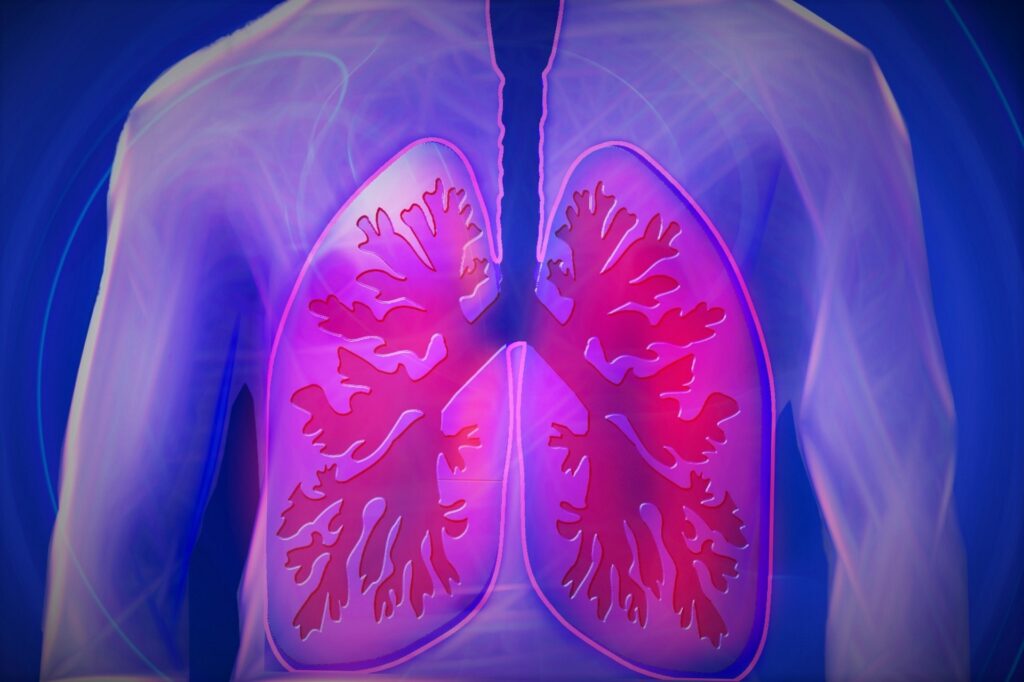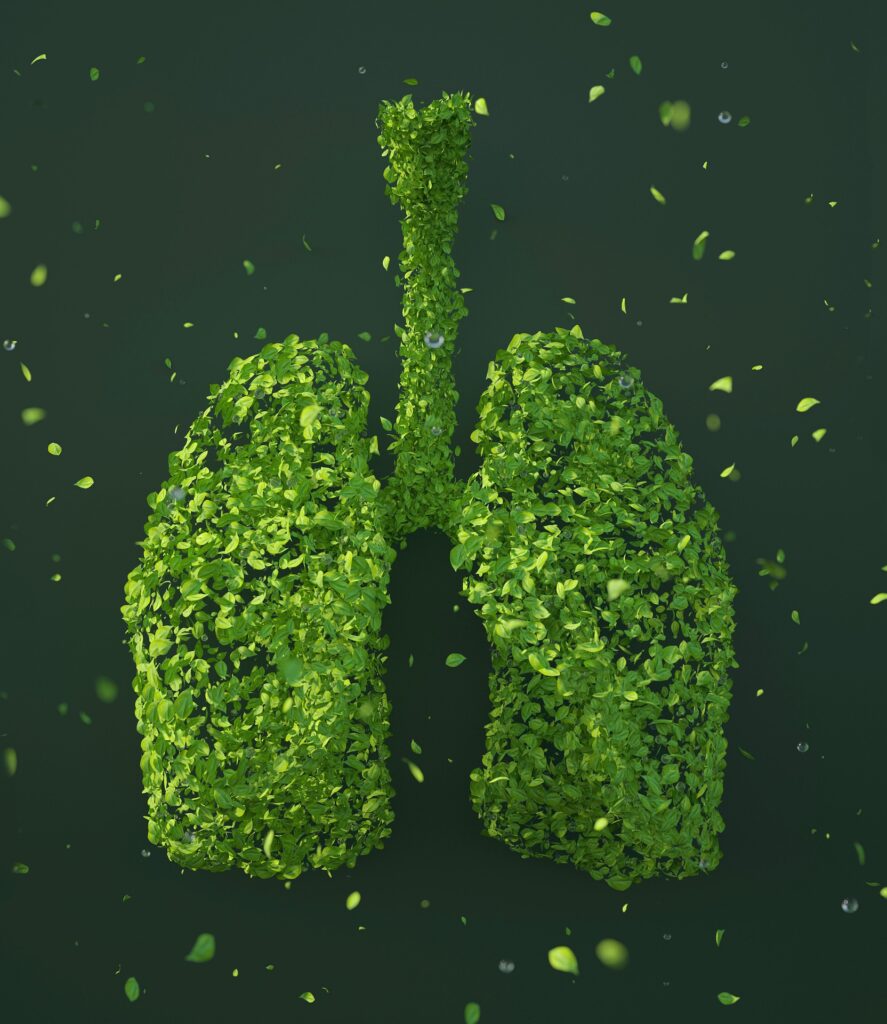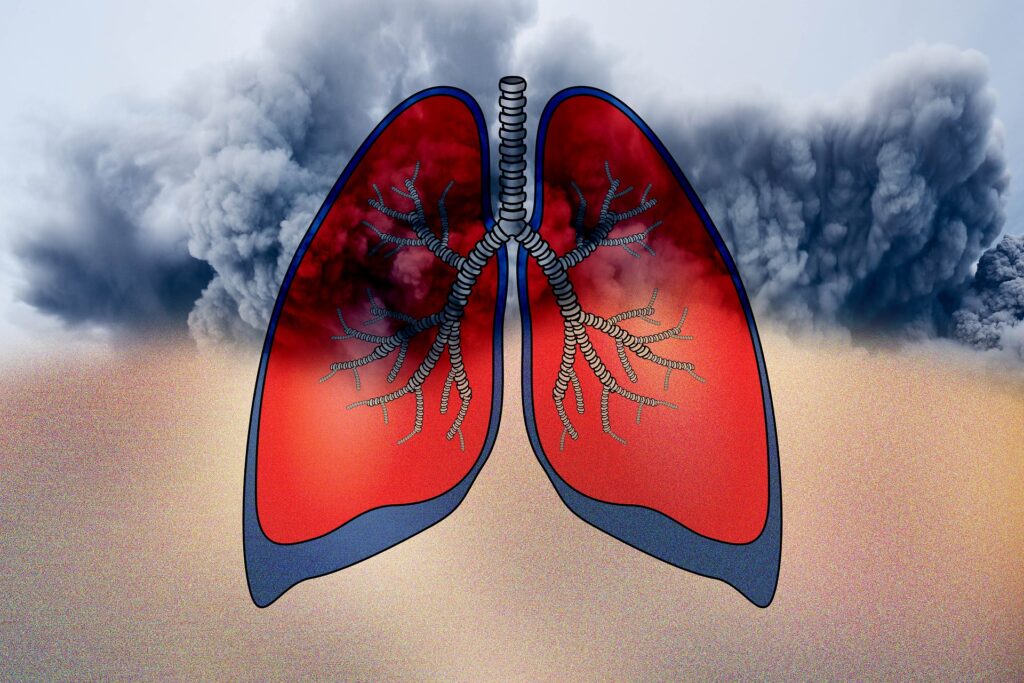Wood smoke allergies refer to the adverse reactions experienced by individuals when they are exposed to wood smoke.
Wood smoke is a byproduct of burning wood in fireplaces, stoves, or outdoor bonfires. While many people find the scent of wood smoke pleasant, it can trigger allergic responses in susceptible individuals.
Symptoms of Wood Smoke Allergies
Wood smoke allergies can manifest in various ways, affecting different parts of the body. It is important to note that symptoms may vary from person to person. Here are some common symptoms associated with wood smoke allergies:
1. Respiratory Symptoms
Individuals with wood smoke allergies often experience respiratory symptoms, which can range from mild to severe. These symptoms may include:
- Coughing
- Wheezing
- Shortness of breath
- Chest tightness
- Nasal congestion
- Sneezing
- Runny or itchy nose
2. Eye and Throat Irritation
Exposure to wood smoke can lead to irritation in the eyes and throat. Common symptoms include:
- Red, watery, or itchy eyes
- Swelling around the eyes
- Sore throat
- Hoarseness
3. Skin Reactions
In some cases, wood smoke allergies can cause skin reactions, such as:
- Itchy skin
- Rash
- Hives (urticaria)
It is important to recognize these symptoms and seek appropriate treatment to alleviate discomfort and prevent further complications.

Reasons Behind Wood Smoke Allergies
Wood smoke allergies are primarily triggered by the various substances present in wood smoke. Let’s explore the reasons behind these allergies:
Particulate matter: Wood smoke contains small particles, including soot, ash, and other pollutants. These particles when inhaled can trigger allergic reactions in sensitive individuals, causing symptoms such as coughing, sneezing, and throat irritation.
Allergenic substances: Wood smoke may contain allergenic substances such as pollen, mold spores, or other organic compounds.
These substances can cause allergic reactions in susceptible individuals, resulting in symptoms such as watery or itchy eyes, runny nose, and skin irritation.
Chemical irritants: Wood smoke contains various chemicals, including volatile organic compounds (VOCs) and irritants such as formaldehyde, acrolein, and benzene.
These substances can irritate the respiratory tract and trigger allergic reactions in some people, causing symptoms such as wheezing, shortness of breath, and chest tightness.
Sensitivity to specific types of wood: Some individuals may have specific sensitivities or allergies to certain types of wood used for burning.
For example, cedar, oak, or pine can produce compounds that can cause allergic reactions in susceptible individuals, resulting in symptoms ranging from respiratory irritation to skin rash.
Individual sensitivity: Each person’s immune system and respiratory health can be different, which affects their susceptibility to wood smoke allergies.
Some individuals may have increased sensitivity or pre-existing respiratory problems, making them more likely to experience allergy symptoms when exposed to wood smoke.
Duration and intensity of exposure: Prolonged or repeated exposure to wood smoke can increase the chance of developing an allergic reaction.
Individuals who live in areas with high levels of wood smoke pollution or are regularly exposed to indoor wood-burning stoves/fireplaces may be at greater risk of wood smoke allergies.
Personal history of allergies: Individuals who have a history of allergies, asthma, or other respiratory problems may be more sensitive to wood smoke allergies.
These pre-existing conditions can increase sensitivity to airborne allergens and irritants present in wood smoke.
It is important to note that each person’s response to wood smoke can vary. Some individuals may develop immediate allergic reactions upon exposure, while others may experience delayed or prolonged symptoms.
Understanding the reasons behind wood smoke allergies can help individuals take appropriate measures to prevent and manage their symptoms effectively.
Wood Smoke Health Effects
Wood smoke can have negative effects on our health. Breathing in wood smoke can cause problems with our breathing, like coughing and difficulty breathing.
It can also worsen conditions like asthma and bronchitis. Wood smoke contains tiny particles that can get deep into our lungs and cause irritation and infections.
The chemicals in wood smoke can also harm our hearts and blood vessels, increasing the risk of heart attacks and strokes.
It can make allergies and asthma worse too. Long-term exposure to wood smoke can lead to lung problems and increase the chances of getting lung cancer.
To stay healthy, it’s important to reduce our exposure to wood smoke and make sure we have good ventilation when using wood-burning devices.
How To Deal With Smoke Allergy
Avoid exposure to smoke: The best approach is to avoid exposure to smoke as much as possible. Stay indoors during periods of high smoke pollution, close windows, and doors to prevent smoke from entering, and use an air purifier with a HEPA filter to clean indoor air.
Create a smoke-free environment: Designate your home and car as smoke-free zones. Make sure no one smokes indoors and ask visitors to smoke outside, away from entry doors and windows.
Stay informed about air quality: Check local air quality reports and stay updated on current pollution levels. Limit outdoor activities when air quality is poor, especially when smoke is spreading, such as from nearby wildfires.
Use allergy medications: Over-the-counter antihistamines can help relieve symptoms such as sneezing, runny nose, and itching. Nasal sprays and eye drops can also relieve nasal congestion and itchy, watery eyes. Consult a healthcare professional to determine the best option for you.
Keep indoor air clean: Use an air purifier with a HEPA filter to remove allergens from the air. Regularly clean dusty surfaces in your home, vacuum with a HEPA filter, and wash bedding in hot water to reduce allergen accumulation.
Nasal rinse: Use a saline nasal rinse or spray to remove allergens and soothe the nasal passages. This can help reduce congestion and reduce the allergenic effects of smoke on the respiratory system.
Wear a protective mask: If you need to be outside during smoke pollution, consider wearing a properly fitted mask such as an N95 respirator to filter smoke particles and reduce exposure.
Consult a health care professional: If your smoke allergy symptoms persist or worsen despite these measures, it is important to consult a health care professional, such as an allergist or immunologist.
They can provide further evaluation and diagnosis, and recommend additional treatment options or strategies specific to your condition.

Conclusion
Wood smoke allergies can significantly impact individuals who are susceptible to them. By understanding the symptoms, treatment options, and preventive measures outlined.
in this article, you can better manage your condition and minimize its effects on your daily life. Remember, seeking professional advice is essential for accurate diagnosis and personalized guidance.
By implementing the recommended preventive measures, you can create a healthier environment and reduce the risk of wood smoke allergies.
Frequently Asked Questions (FAQ)
Q: What causes wood smoke allergies?
A: Wood smoke allergies are triggered by exposure to the particles and chemicals present in wood smoke. When individuals with a sensitivity or allergy to these substances come into contact with wood smoke, their immune system reacts, leading to allergic symptoms.
Q: Are wood smoke allergies common?
A: Wood smoke allergies are not uncommon. Many individuals may experience allergic reactions or respiratory discomfort when exposed to wood smoke, especially those with pre-existing respiratory conditions or allergies.
Q: How can I differentiate between a wood smoke allergy and a common cold?
A: While both wood smoke allergies and the common cold can cause respiratory symptoms, there are a few distinguishing factors.
Wood smoke allergies are typically triggered by exposure to wood smoke, and symptoms often manifest immediately or shortly after exposure. In contrast, a common cold is usually accompanied by other symptoms like sore throat, fatigue, and nasal congestion.
Q: Can wood smoke allergies be inherited?
A: Allergies, including wood smoke allergies, can have a hereditary component. If one or both of your parents have allergies, you may have an increased risk of developing allergies as well. However, other factors like environmental exposure also play a role in the development of allergies.
Q: Can wood smoke allergies be cured?
A: Wood smoke allergies cannot be completely cured, but their symptoms can be managed effectively. With proper diagnosis and treatment, including avoidance of wood smoke and appropriate medications, individuals can significantly reduce the impact of wood smoke allergies on their daily lives.
Q: Can wood smoke allergies lead to long-term complications?
A: Prolonged exposure to wood smoke can potentially worsen respiratory conditions and lead to complications in individuals with wood smoke allergies.
It is important to manage symptoms effectively and minimize exposure to wood smoke to prevent the progression of complications.
Q: Are there any natural remedies to alleviate wood smoke allergy symptoms?
A: While there are no specific natural remedies for wood smoke allergies, some individuals may find relief through practices like nasal irrigation with saline solution, using a humidifier, or consuming certain herbal teas with anti-inflammatory properties. However, it is essential to consult a healthcare professional before attempting any natural remedies.
Q: Can children develop wood smoke allergies?
A: Yes, children can develop wood smoke allergies. They may be more susceptible to the harmful effects of wood smoke due to their developing respiratory systems.
It is crucial to create a smoke-free environment for children and take necessary precautions to minimize their exposure to wood smoke.
Q: Can wood smoke allergies be diagnosed through allergy testing?
A: Allergy testing, such as skin prick tests or blood tests, can be conducted to diagnose wood smoke allergies.
These tests help identify specific allergens that trigger allergic reactions, allowing healthcare professionals to develop an appropriate treatment plan.
Q: Can I still enjoy campfires or bonfires if I have a wood smoke allergy?
A: If you have a wood smoke allergy, it is advisable to avoid direct exposure to wood smoke, including campfires and bonfires.
However, you can still enjoy outdoor gatherings by sitting at a safe distance from the source of the smoke or opting for alternative activities that don’t involve wood burning.
Remember, if you have specific concerns or questions about wood smoke allergies, it is best to consult a healthcare professional for personalized advice and guidance.
Disclaimer: The information provided in this article is for educational purposes only and should not replace medical advice. Consult a healthcare professional for personalized guidance and treatment options related to wood smoke allergies.

